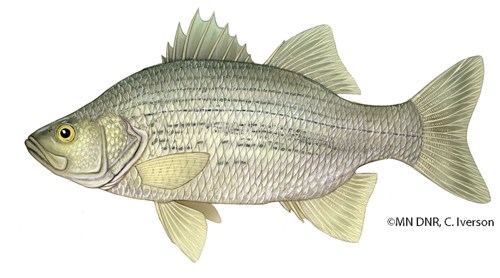
(c) MN DNR, C. Iverson IntroductionWhen baitfish leap and gulls divebomb the water, a school of white bass may be the likely cause as they chase baitfish to the water's surface. These silvery aggressive feeders travel in large schools, often near the surface. In rivers, small gizzard shad are a preferred food but white bass also feed on crustaceans, aquatic insects, and other small fish. White bass thrive in the open waters of large lakes and reservoirs but avoid areas of continuous turbidity. White bass require little management beyond habitat protection to thrive and aren't introduced into Minnesota waters where they don't already occur. Fascinating Facts
IdentificationKey ID Features: White bass are whitish silver in color with 6-8 black lateral stripes along its deep sides. Its dorsal fin is distinctly split into two sections. Its mouth has an underbite. White bass is a midsized sport fish, averaging 18 inches in length. For Further Reading
|
Last updated: November 22, 2019
